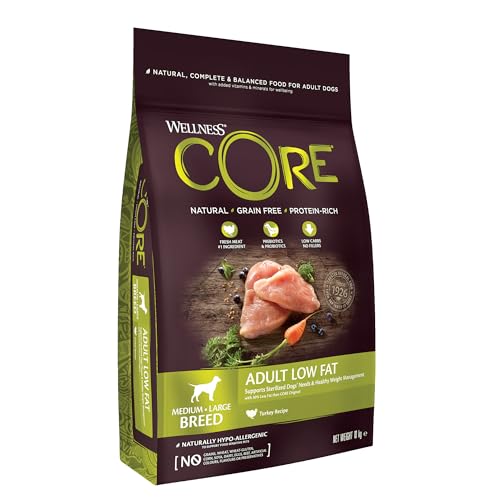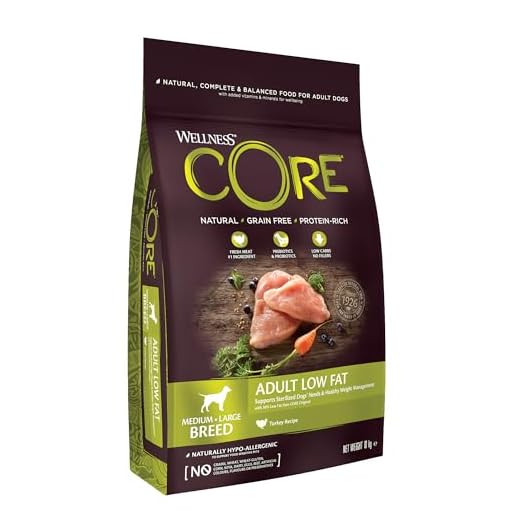




Survival rates for pets diagnosed with this condition can vary greatly, but many can enjoy several months to years of quality life with appropriate treatment. Key factors influencing longevity include the underlying cause, the effectiveness of treatment strategies, and the overall health of the animal.
Early diagnosis plays a crucial role. If detected promptly, management options such as dietary modifications, thoracentesis, or even surgical interventions can significantly improve outcomes. A tailored approach, often involving a veterinary specialist, is recommended to ensure the best possible care.
Regular monitoring is essential. Frequent veterinary check-ups allow for timely adjustments to treatment plans, ensuring that any complications are addressed swiftly. Pet owners should be vigilant for symptoms such as respiratory distress or lethargy, as these can indicate changes in the animal’s condition that require immediate attention.
Maintaining a supportive environment is equally important. Stress reduction, a balanced diet, and ensuring a calm atmosphere can enhance the well-being of a pet undergoing treatment. Engaging in gentle activities that do not overexert them can also contribute to a better quality of life.
Understanding chylothorax in dogs
The accumulation of lymphatic fluid in the thoracic cavity can lead to significant health issues. Affected animals often display symptoms such as difficulty breathing, coughing, and lethargy. Early detection and intervention are critical for managing this condition effectively. Diagnostic imaging, like X-rays or ultrasounds, helps identify the presence of chylothorax and assess its severity.
Management strategies may include dietary modifications, such as a low-fat diet, to reduce lymphatic fluid production. In some cases, surgical options like thoracic duct ligation or pleural port placement may be recommended to address the underlying cause and provide relief. Regular follow-ups with a veterinarian ensure that treatment plans are adjusted as needed.
Monitoring for complications is essential. Animals may develop infections or fibrosis in the pleural space, which could further complicate recovery. Owners should be vigilant for any changes in their pet’s behaviour or respiratory patterns, as these can indicate worsening of the condition.
Supportive care, including oxygen therapy and pain management, plays a significant role in improving the quality of life. Engaging with a veterinary specialist familiar with this condition can provide additional insights and tailored treatment options, enhancing the chances of a positive outcome.
Symptoms Indicating Chylothorax in Dogs
Observe your pet closely for these signs of fluid accumulation in the chest cavity. Early detection can significantly aid in management and treatment.
Common Symptoms
Typical indicators include:
- Increased respiratory effort or laboured breathing
- Persistent cough, particularly after exercise
- Fatigue or lethargy, noticeable during walks or playtime
- Loss of appetite or weight reduction
- Swollen abdomen due to fluid buildup
Advanced Symptoms
In more severe cases, you might notice:
- Cyanosis, or a bluish tint to the gums
- Excessive panting when at rest
- Fainting or collapse during physical activity
| Symptom | Description |
|---|---|
| Laboured Breathing | Noticeable effort in breathing, often with a rapid rate. |
| Coughing | Frequent and sometimes productive cough, especially post-exercise. |
| Fatigue | Reduced energy levels, reluctance to engage in normal activities. |
| Weight Loss | Decrease in body condition, often accompanied by decreased appetite. |
| Swollen Abdomen | Visible distension caused by fluid accumulation. |
Keeping an eye on these symptoms can alert you to potential issues. If you notice any of these signs, seek veterinary care promptly for diagnosis and treatment options.
Diagnosing chylothorax: What to expect
Expect a thorough examination by a veterinarian when assessing for chylothorax. Initial steps typically include a complete physical evaluation, where the vet will check for any signs of respiratory distress or abnormal fluid accumulation in the chest cavity.
Diagnostic imaging plays a key role. X-rays can reveal fluid levels in the thorax, while ultrasound offers a more detailed view of the chest and surrounding tissues. These methods help determine the extent of the condition and rule out other potential issues.
Fluid analysis is often necessary. A sample of the fluid from the chest cavity may be extracted via thoracentesis. The veterinarian will analyse this fluid to confirm if it is indeed chylous, which is characterised by a milky appearance, indicating the presence of lymphatic fluid.
Blood tests could also be recommended. They help assess overall health and identify any underlying conditions contributing to the fluid accumulation. Testing for conditions such as heart disease, cancer, or trauma may be part of the process.
In some cases, advanced imaging techniques, like CT scans, might be employed to get a clearer picture of the thoracic structures. This ensures a comprehensive understanding of any potential blockages or abnormalities in the lymphatic system.
Once diagnostics are complete, the veterinary team will discuss findings and potential treatment options. Clear communication helps pet owners understand the situation and decide on the best course of action.
Treatment options and their impact on lifespan
Medical intervention significantly influences prognosis for pets experiencing pleural effusion due to chylothorax. Surgical options, such as thoracic duct ligation, often provide the best chance for recovery, potentially extending lifespan considerably. This procedure aims to divert lymphatic fluid away from the pleural cavity, promoting better respiratory function and overall well-being.
In cases where surgery isn’t feasible, a combination of dietary management and medical therapy can be beneficial. Specialised low-fat diets help reduce lymphatic flow and the volume of chyle produced, while medications like diuretics can assist in managing fluid accumulation. These strategies may not be as definitive as surgical options but can improve quality of life and prolong survival.
Ongoing monitoring is critical. Regular veterinary check-ups help adjust treatment plans based on response. If symptoms such as regurgitation or respiratory distress arise, adjustments may be necessary. For additional insights on related issues, you can check out this link: why is my dog regurgitating her food.
In some instances, interventional procedures like thoracocentesis can provide immediate relief by draining excess fluid, but this is generally a temporary solution. The underlying causes must be addressed for long-term improvement.
Ultimately, the approach taken will depend on the individual situation, including the pet’s overall health, age, and specific circumstances surrounding the chylothorax. Tailoring treatment plans to each pet’s needs is essential for maximising lifespan and enhancing the quality of life.
Factors influencing survival rates in dogs with chylothorax
Survival rates for canines suffering from chylothorax hinge on several key elements. Early diagnosis significantly boosts the chances of a favourable outcome. If you notice symptoms like persistent coughing or difficulty breathing, immediate veterinary attention is paramount.
Age and Overall Health
The age and general health condition of the animal play crucial roles. Younger pets typically respond better to treatment due to their resilience. Pre-existing conditions, such as heart disease or cancer, may complicate recovery and reduce lifespan.
Type of Treatment Administered
Various treatment options exist, each with different impacts on longevity:
- Medical management: Dietary changes and medications can stabilise some cases, leading to extended survival.
- Surgical interventions: Procedures like thoracic duct ligation often yield the best long-term results, although surgery carries inherent risks.
- Supportive care: Regular follow-ups and care can help manage symptoms effectively, enhancing quality of life.
Monitoring response to treatment is vital. Adjustments may be necessary based on how well the canine tolerates the chosen method. Regular vet check-ups can help catch any complications early, further aiding in prolonging a pet’s life.
Finally, emotional support and a stress-free environment contribute to recovery. A calm atmosphere can positively impact overall health, helping the animal cope better with its condition. Owners should be attentive, providing love and comfort during this challenging time.
Monitoring and Caring for a Canine Diagnosed with Chylothorax
Establish a routine for monitoring respiratory function. Observe for any signs of distress, such as rapid breathing or coughing, and keep a record of these occurrences to discuss with your vet during follow-up appointments. Regularly check for any changes in appetite or energy levels, as these can indicate complications.
Nutritional Management
Modify the diet to support recovery. Low-fat meals are crucial, as high-fat diets can exacerbate fluid accumulation. Consider consulting a veterinary nutritionist to create a tailored meal plan. Frequent, smaller meals can also help improve digestion and nutrient absorption. Always ensure fresh water is available.
Medication Administration
Adhere strictly to the prescribed medication schedule. Anti-inflammatory drugs or diuretics may be necessary to manage symptoms. Monitor for side effects, and report any adverse reactions to the veterinarian. Keep track of medication refill dates to avoid interruptions in treatment.
Regular vet visits for imaging and fluid analysis are essential. These appointments help evaluate the effectiveness of treatment and adjust the management plan as needed. Maintain open communication with your veterinary team and do not hesitate to ask questions.
FAQ:
What is chylothorax in dogs?
Chylothorax is a condition in which lymphatic fluid, known as chyle, accumulates in the pleural cavity of a dog. This fluid buildup can lead to respiratory issues, as it puts pressure on the lungs. The condition can arise from various causes, including trauma, heart disease, or certain types of cancer. It can affect dogs of any age or breed, and prompt diagnosis and treatment are crucial for managing the condition.
How long can a dog live if diagnosed with chylothorax?
The lifespan of a dog diagnosed with chylothorax can vary widely depending on several factors, including the underlying cause of the condition, the dog’s overall health, and the effectiveness of the treatment administered. Some dogs may respond well to treatment and live for several years, while others with serious underlying health issues may have a shorter life expectancy. Regular veterinary check-ups and an appropriate treatment plan are essential for managing the condition and improving quality of life.
What treatment options are available for dogs with chylothorax?
Treatment options for chylothorax in dogs may include dietary changes, medication to reduce fluid accumulation, and, in some cases, surgical intervention. A low-fat diet can help decrease the production of chyle, while diuretics may be prescribed to help remove excess fluid. Surgical options, such as pleurodesis or lymphatic duct ligation, may be considered for more severe cases. The specific treatment plan will depend on the individual dog’s condition and should be discussed with a veterinarian.
Are there any signs I should look for if I suspect my dog has chylothorax?
Signs of chylothorax in dogs can include difficulty breathing, coughing, lethargy, and a decreased appetite. You may also notice abdominal swelling or fluid buildup in the chest area. If you observe any of these symptoms, it is important to seek veterinary care promptly, as timely diagnosis and treatment can significantly impact the outcome for your dog.
Can chylothorax be prevented in dogs?
Prevention of chylothorax can be challenging, as it is often associated with underlying health issues that may not be easily preventable. However, maintaining a healthy lifestyle for your dog, including a balanced diet, regular exercise, and routine veterinary check-ups, can help reduce the risk of conditions that may lead to chylothorax. Additionally, prompt treatment of any injuries or health problems can also play a role in prevention.
What is chylothorax in dogs and how does it affect their lifespan?
Chylothorax is a condition characterised by the accumulation of lymphatic fluid in the chest cavity, specifically in the pleural space. This fluid is rich in fats and can lead to respiratory distress and other complications. The impact on a dog’s lifespan can vary significantly depending on the underlying cause, the severity of the condition, and how well it is managed. Some dogs may experience a normal lifespan with appropriate treatment, while others may have a reduced lifespan if the condition is severe and untreated. Regular veterinary check-ups and timely interventions are crucial for improving the prognosis.






